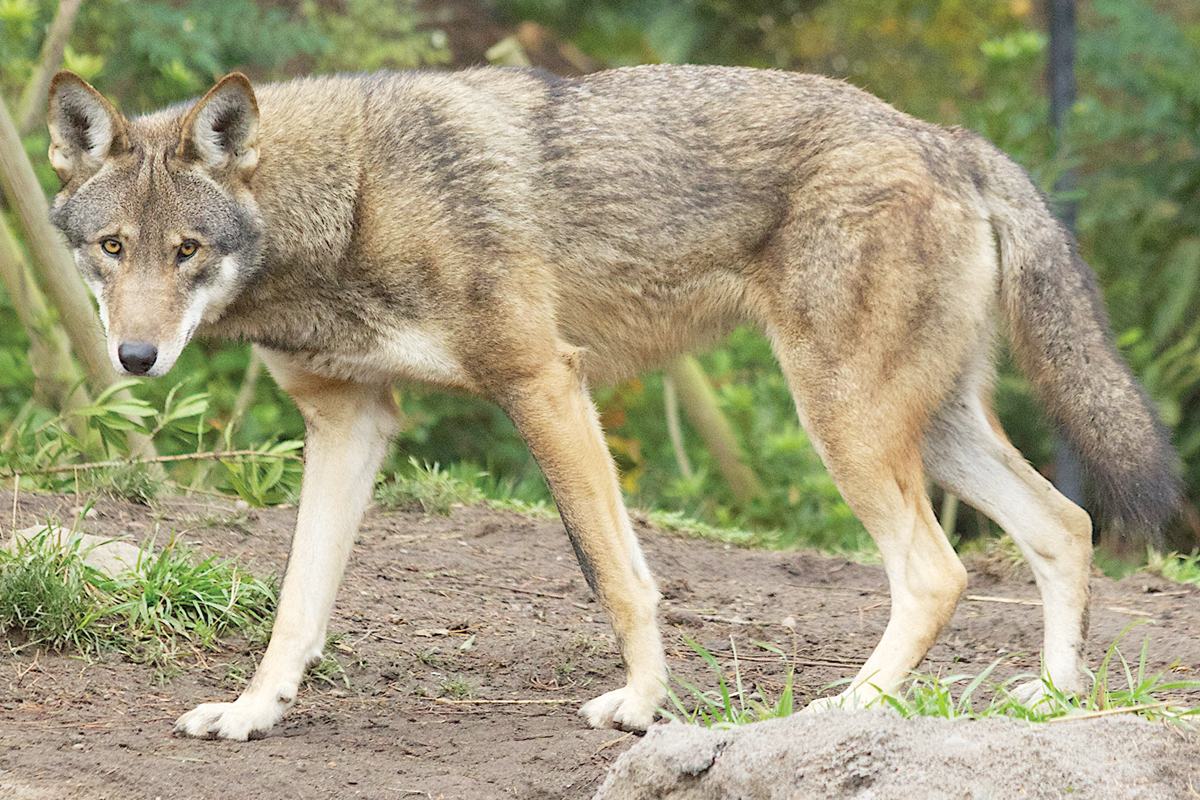Red wolf recovery plan complete
 Red wolves have been listed as endangered since 1973. USFWS photo
Red wolves have been listed as endangered since 1973. USFWS photo
A final recovery plan for the red wolf, a document from the U.S. Fish and Wildlife Service that will guide recovery efforts for an imperiled native species, is now complete.
“The final revised plan underscores the service’s commitment to working with others to conserve the red wolf while also maintaining a rural way of life by working farms and ranches,” said U.S. Fish and Wildlife Service Director Martha Williams. “Successful recovery requires collaboration with all who are involved and interested in red wolf recovery, including continued transparent engagement with the community to facilitate a coexistence between people and red wolves.”
The only distinct canid species native to the U.S., the red wolf once ranged from southern New York to central Texas, its range including the entire Southeast. But it had been driven to near extinction by the 1970s and was listed as endangered in 1973. The first reintroductions occurred at Alligator River National Wildlife Refuge in eastern North Carolina in 1987, establishing the eastern North Carolina Red Wolf Population. A failed reintroduction effort in the Smokies began in 1991.
The plan is a non-regulatory document that aims to chart a path forward for the species to return to its historic range so that, eventually, it will no longer require Endangered Species Act protections.
Currently, there are an estimated 23-25 wild red wolves in eastern North Carolina, with an additional 269 animals living in captivity. The reintroduction effort has been fraught with tension between local residents, the FWS, conservation groups and the N.C. Wildlife Resources Commission, prompting multiple court battles over how best to balance conservation of this critically endangered species with the wishes of the local community.
Related Items
In some ways, the new plan is an improvement, said Ron Sutherland, chief scientist for the Wildlands Network.
“The new plan represents a strong affirmation that the USFWS has regained its resolve to work on recovering red wolves,” he said. “I particularly like the emphasis on needing to reduce gunshot and vehicle strike mortality rates for the wolves by 50%.”
The plan’s recovery target of 740 wild red wolves is also a “significant improvement” over the 220 wolves the 1990 plan required before delisting could occur — though Sutherland believes that population viability research would indicate a proper recovery goal closer to 2,000.
However, he said, the plan is not perfect. Sutherland disagrees “wholeheartedly” with a statement in the plan that wild red wolves could be classified as “nonessential” because the species is protected under the captive breeding program. Zoos are a temporary solution, he said, and relying on them for too long will cause the animal to evolve in response to captivity conditions.
He also pointed out that, while the plan talks about reducing the number of wolves struck by cars, it doesn’t mention the possibility of installing wildlife road crossing structures.
“When we asked wildlife experts across North Carolina to name the top priorities for wildlife road crossings, U.S. 64 through Alligator River National Wildlife Refuge was one of the top two sites they picked — the other was I-40 through the Pigeon River Gorge,” he said.
To read the plan, visit fws.gov/media/revised-recovery-plan-red-wolf.
— Holly Kays, Outdoors Editor









